To tremble from cold in the icy snow,
In the harsh breath of a horrid wind;
To run, stamping one’s feet every moment,
Our teeth chattering in the extreme cold
Vivladi’s Four Seasons. Sonnet for the Winter First movement.
The Italian composer Antonio Vivaldi gave musical expression to each season of the year. Le Quattro Stagioni (The Four Seasons) is a group of four violin concertos composed around 1718−1720. They were published in 1725 in Amsterdam, together with eight additional concerti, as Il Cimento dell’armonia e dell’inventione (The Contest Between Harmony and Invention).

Vivaldi represented flowing creeks, singing birds of different species, a shepherd and his barking dog, buzzing flies, storms, drunken dancers, hunting parties from both the hunters’ and the prey’s point of view, frozen landscapes, and warm winter fires. The composer expressed these situations in sonnets (not clear if they were written by the composer himself) that elucidated what it was in the spirit of each season that his music was intended to evoke. The concerti therefore stands as one of the earliest and most detailed examples of music with a narrative element, what was called later “program music”.
Vivaldi translated the poetic lines themselves directly into the music on the page and divided each concerto into three movements (fast–slow–fast), and, likewise, each linked sonnet into three sections.



The astronomer Giacomo Maraldi observed both polar caps of Mars in 1719. He described them as “taches blanches” (white spots) and he noticed that the cap at the south pole is not centered on Mars’ axis of rotation. Mars was inclined like Earth!

In 1781, the astronomer William Herschel determined the Mars Inclination finally. The same who discovered Uranus, measured the Mars axis of rotation approximately 24 degrees (23,4 Earth’s). He achieved this determination based on his observation of the way in which Martian surface features rotate. He was impressed and imagined Mars very similar to Earth; thus was born this conception that still remains despite later discoverings that evidenced strong differences between the planets.
“The analogy between Mars and the earth is, perhaps, by far the greatest in the whole solar system. The diurnal motion is nearly the same; the obliquity of their respective ecliptics, on which the seasons depend, not very different; of all the superior planets the distance of Mars from the sun is by far the nearest alike to that of the earth…. If, then, we find that the globe we inhabit has its polar regions frozen and covered with mountains of ice and snow, that only partly melt when alternately exposed to the sun, I may well be permitted to surmise that the same causes may probably have the same effect on the globe of Mars; that the bright polar spots are owing to the vivid reflection of light from frozen regions; and that the reduction of those spots is to be ascribed to their being exposed to the sun.”
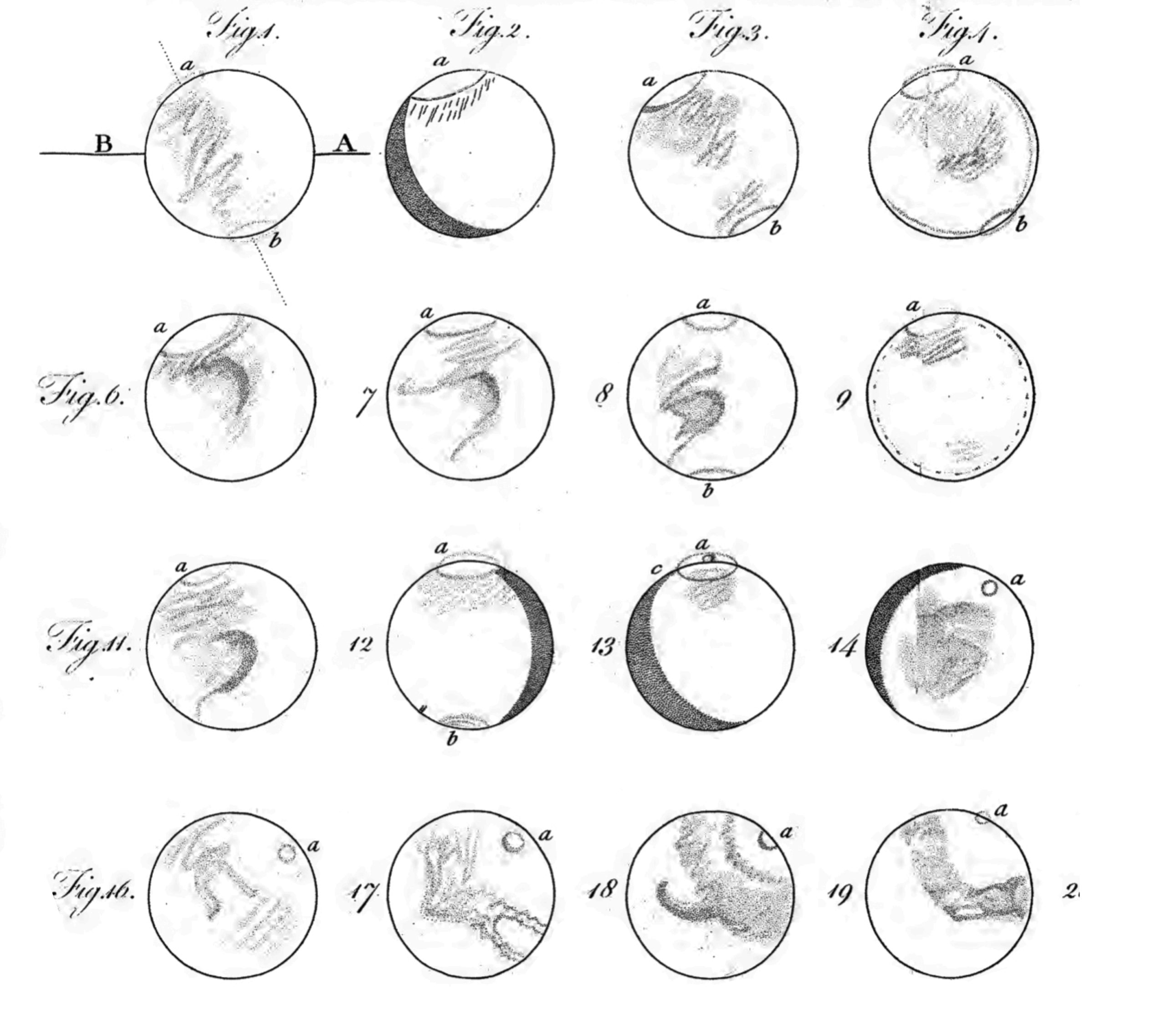
Since then, because of the Mars tilt, we know it has seasons like us!

Martian seasons are detectable through the migration of Mars’s polar ice caps, which are always there. When it is winter in one hemisphere, the other has summer. Most of the Martian Atmosphere is composed of CO2; thus, the snowy CO2 sublimates in summer and goes to the other side of the planet as gas in the atmosphere, to freeze and snow on the other ice cap.
Another factor affecting the seasons is the shape of a planet’s orbit (actually, it is the position of the Sun with respect to the planet’s orbit). For instance, the orbit of Earth is almost circular, our seasons are nearly equal in length both with each other and on both hemispheres. The differences are just a few days. Moreover, the stability of Earth’s axis is controlled by our large Moon. In the case of Mars, it has two tiny satellites (Deimos and Phobos) which are incapable of doing anything like that and the inclination of the axis of Mars’s rotation alternates possibly tens of degrees between its extreme values.
According to this, Mars’ situation is completely different. The shape of Mars’ orbit is more elliptical than the Earth’s.The lengths of the seasons and the weather conditions during them depend heavily on the distance between the planet and the Sun, as it varies so radically from the perihelion (the nearest point of a body’s orbit around the Sun) to the aphelion (the farthest point of a body’s orbit around the Sun) .
The northern hemisphere summer and the southern hemisphere winter on Mars last more than 180 sols (Martian days), while the length of the northern hemisphere winter and the southern hemisphere summer is just over 160 sols. The difference between the spring and autumn is larger still, more than 50 sols.
Another critical factor is the amount of solar energy Mars receives – the solar constant or the solar insolation at the top of the Martian atmosphere –. At the perihelion this solar energy is about 35% larger than at aphelion. This makes the northern hemisphere winter short and mild, provided that a temperature of some -100°C can be characterized as mild, and the summer long and cool, while in the southern hemisphere winter is correspondingly long and freezing cold and the summer short but relatively temperate.
Since these characteristics, it is considered there exists two additional seasons at the aphelion and perihelion on Mars.

Spring, summer, autumn, winter, aphelion, perihelion; it would be a Six Seasons concert.
The sonnet for the Winter First movement of Vivaldi’s 4 seasons can be left almost the same !.
Allegro non molto
To tremble from cold in the icy snow,
In the harsh breath of a horrid wind;
To run, stamping one’s feet every moment,
Our teeth chattering in the extreme cold
Winter would be the preferred season for Mars.
Also the winter 3rd sonnet could be experienced by humans walking on mars!.
Allegro
We tread the icy path slowly and cautiously,
for fear of tripping and falling.
Then turn abruptly, slip, crash on the ground and,
rising, hasten on across the ice lest it cracks up.
We feel the chill north winds course through the home
despite the locked and bolted doors…
this is winter, which nonetheless
brings its own delights.
Maybe an around -143ºC much colder winter on Mars movement would be almost the same as Vivaldi’s composition!.
Considering the spring on Mars; its activity starts as the seasonal polar cap begins to sublimate (going from ice state directly to gas state). When it occurs, streaks of dry ice in the form of dark particles emerge from Martian soil.
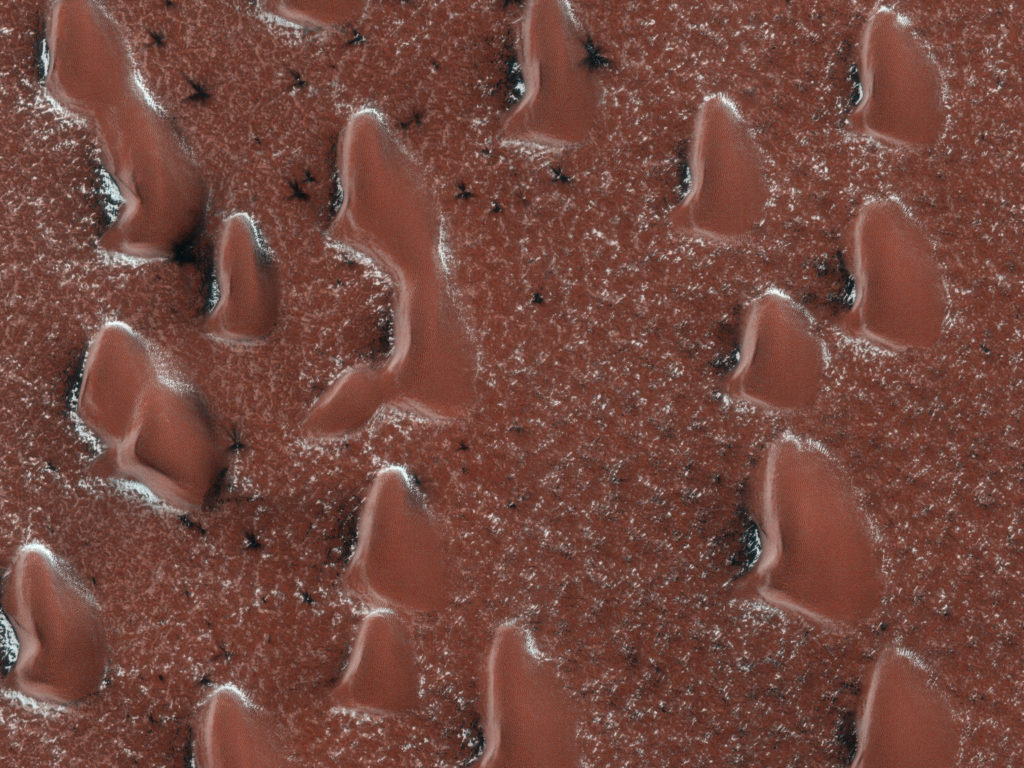
Gas jets sprout through the ice layer carrying dust and sand from the surface, showing up as fans.

In Spring a very important protagonist appears on stage: the dust storms. Dust storms can crop up suddenly for weeks, even months. During southern summer, sunlight warms dust particles, lifting them higher into the atmosphere and creating more wind. That wind kicks up yet more dust, creating a feedback loop.
Also the lighting conditions change dramatically while the dust clouds gradually engulf Mars. At worst the airborne dust blocks almost 99% of the sunlight.
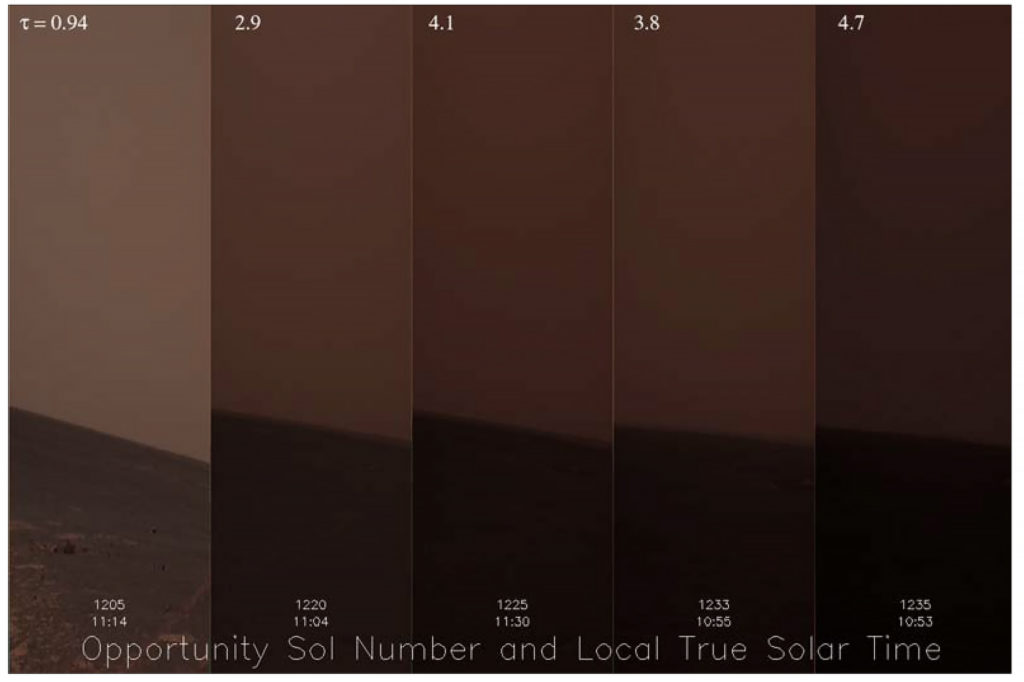
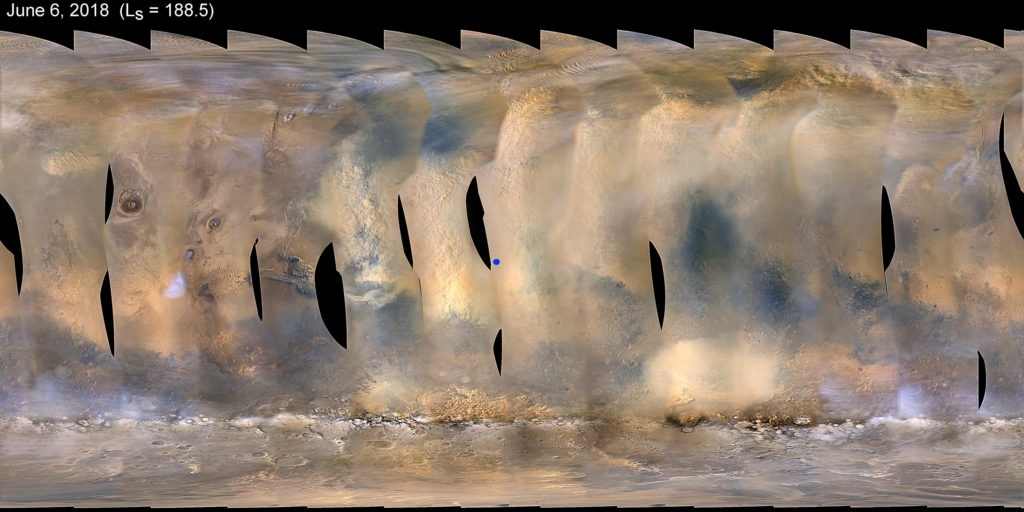
In fact, small dust storms can occur in any season. Dust storms can brew in one area of the planet and occasionally become planet-wide storms.

Antonio Vivaldi’s spring sonnets and music imply something very different of course!::
Allegro
Springtime is upon us.
The birds celebrate her return with festive song,
and murmuring streams are
softly caressed by the breezes.
Thunderstorms, those heralds of Spring, roar,
casting their dark mantle over heaven,
Then they die away to silence,
and the birds take up their charming songs once more.
Largo
On the flower-strewn meadow, with leafy branches
rustling overhead, the goat-herd sleeps,
his faithful dog beside him.
Allegro
Led by the festive sound of rustic bagpipes,
nymphs and shepherds lightly dance
beneath spring’s beautiful canopy.
No bird celebration at all on Mars. Nevertheless, we can play with the joyful atmosphere narrated in Vivaldi’s sonnets as if it was an exuberant climax transformation on Mars. The planet wakes up after a long and extremely strong winter.
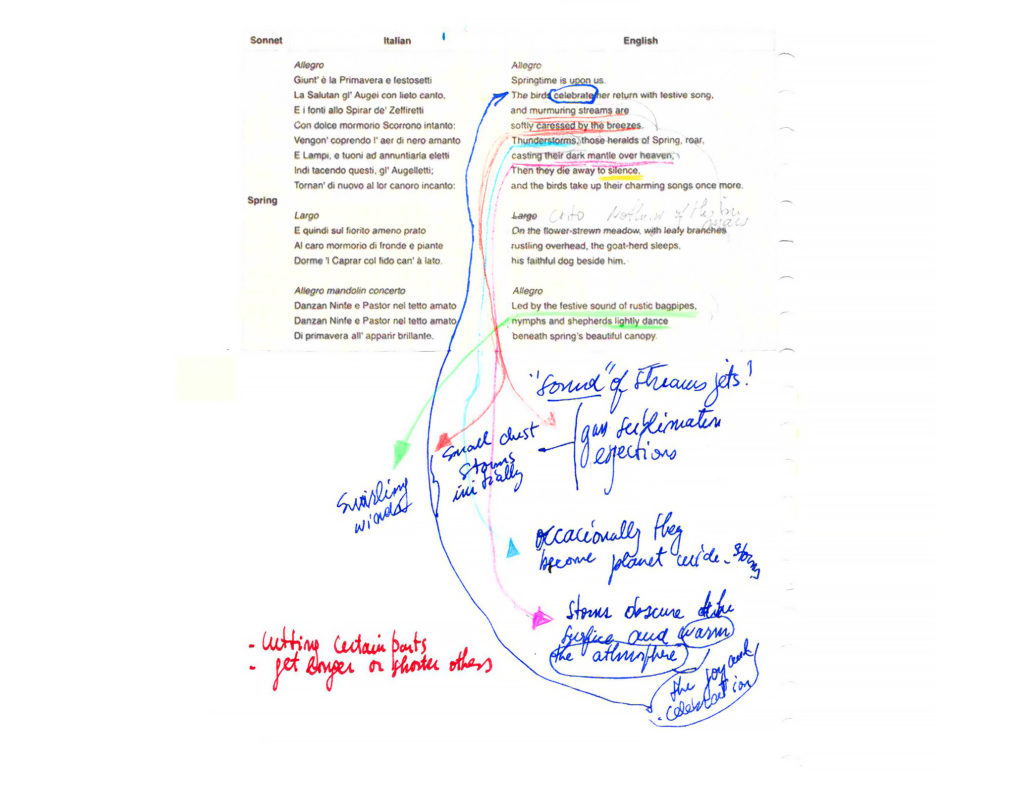
Dust storms cover the atmosphere as a dark mantle over the heavens.
Imagine humans experiencing a Martian summer breeze. If you were standing on the surface you’d feel the wind flying around. Sound of chords surround you, embrace you.
Martian weather conditions vary from hour to hour impeling quick and dynamical changes in instruments..
If it’s been thought Mars was Earth-like once; one can imagine Vivaldi’s 4 seasons music starting like on Earth and drifting in Martian seasons with time.
Probably you know the sound on Mars propagates slower because of the thin atmosphere and its different composition. Also sound velocity depends on pitches which are different from Earth.
Curiously the atmospheric pressure changes so much with the seasons on Mars. The ejected gasses in sublimation during spring and summer change the atmospheric density and so the sound conditions. In the Martian autumn, Mars might get noisier.
Can you imagine such a 6 season concert?!
